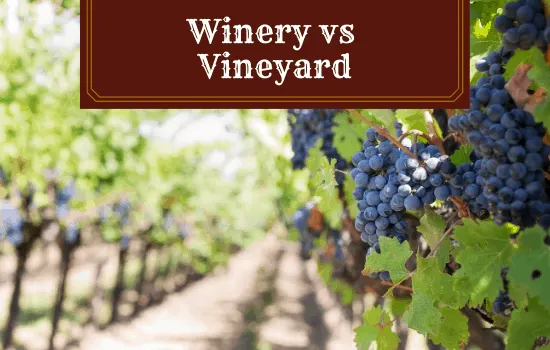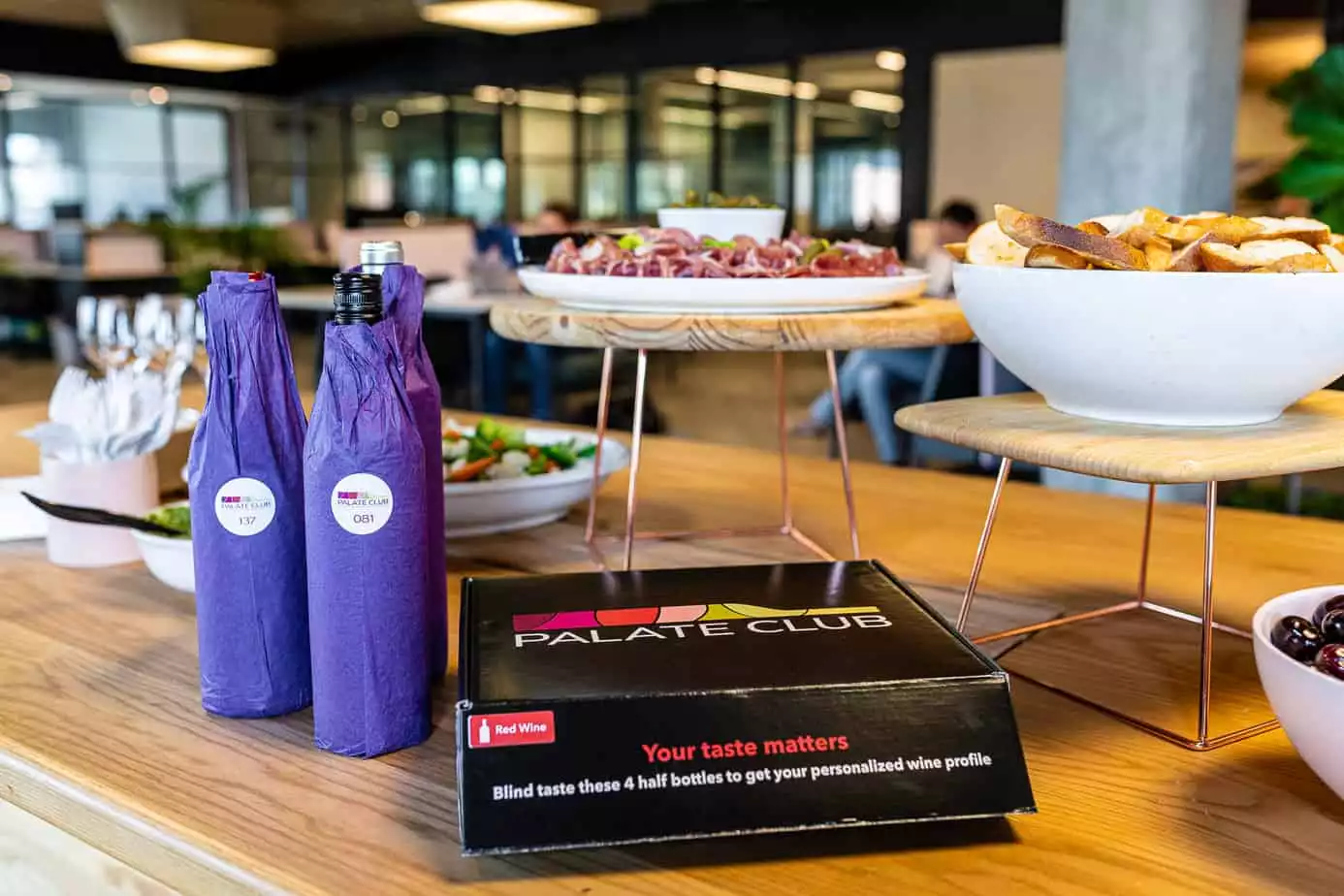- Winery vs Vineyard: What’s the Difference? - July 10, 2022
- The Best Under Counter Wine Cooler Options - July 10, 2022
- Nutrichef Wine Cooler Review: Is It Worth Buying? - July 8, 2022
I don’t know about you, but anytime I hear the words winery or vineyard, I immediately get excited. Mostly because that means there is wine somewhere nearby that needs tasting.
Anytime I see a sign for a winery or vineyard on the side of the road, I have to restrain myself from pulling over and tasting all the wine. White wine, red wine, dessert wine, I don’t discriminate. All I know is that my wine spidey sense is tingling and needs to be fulfilled.
Premium wines matched your taste, shipped when you want them. Easy. Be surprised with wines you love.
But often I hear some people, even those that work at the wineries or vineyards themselves, use these two words interchangeably. They shouldn’t be, though, as there is a distinct difference between a winery and a vineyard.
So what is a winery? And for that matter, what is a vineyard? And how do these two wine-producing entities relate and differ from one another?
Read on to find out.
Table of Contents
The Main Differences Between a Vineyard and a Winery:
- A vineyard is a plantation that produces the grapes for the wine, whereas the winery is the building which is part of the wine production process.
- A vineyard may not have a winery associated with it, whereas a winery may purchase grapes from an outside vineyard.
- A vineyard produces grapes, whereas a winery produces wine.
What is a Winery?
Simply put, a winery is a building or property used for the production of wine. Typically, a winery will employ a winemaker who produces wines from grapes either made on the property or purchased from an outside vineyard.
Producing wine requires several steps, which include the fermenting of the grapes themselves, along with the aging and blending of the juice. However, keep in mind that not every winery has a vineyard, as I mentioned previously.

Types of Wineries
There are a wide variety of wineries with different practices and purposes. Let’s take a look at some of the more common winery types:
Vineyard Winery
This is the winery most people think of when discussing where wine is made. These types of wineries own large tracts of land on which they grow their grapes, harvest them, crush the grapes, then turn them into delicious wine.
A wine that is grown and produced at the same winery is called an Estate Wine. These typically cost a little more than their counterparts since they are grown and produced at the winery itself.
Farm Winery
When it comes to a farm winery, nearly everything is the same as a traditional winery. However, the owners of the winery live on the property and usually grow other crops along with the grapes.
Some people enjoy living on the same property as their winery. However, it means they can never really escape their work.

Urban Winery
An urban winery is a quickly growing trend where wineries are located in a downtown area. Usually, these wineries don’t have room to grow their own grapes, so they have them shipped in.
When the winemaker gets the grapes from the preferred vineyard, they start the process of making their wine. Typically you’ll find these in storefront shops.
Venue Winery
Most venue wineries will have a large room or hall dedicated to special events like weddings. Some even have large outdoor areas for festivals and concerts. While venue wineries do produce wine, they are usually more well-known for their large event spaces.
Destination Winery
A destination winery is usually located in the country, offering amazing views, relaxing settings, and other attractions for those that want to get away for a few days. Some also offer bed and breakfast options to visitors, so you can enjoy the wine and views all in the same weekend.
What is a Vineyard?
A vineyard is defined as a plantation that produces grape-bearing vines, which are mainly grown for the purpose of winemaking. However, there are also vineyards that grow table grapes, raisins, and even non-alcoholic grape juice.

Quick History of Vineyards
We know wine has been around for thousands of years. After all, didn’t Jesus turn water into wine? But the earliest evidence of wine goes all the way back to 5000 BC.
From that point, winemaking improved significantly, with the Romans finally creating and honing the techniques that are commonly used today.
The Church has long been a supporter of wine and winemaking since it was a necessity for celebrating both Mass and communion. During the Middle Ages, monasteries helped to develop and maintain many practices that impact how wine is tended today.
Terroir
Terroir, pronounced tear-wahr, is the environmental conditions, specifically climate and soil, in which grapes are grown on a vineyard. These are natural factors associated with any vineyard, which gives the wine its aroma and flavoring.
Factors that impact the terroir include soil, altitude, the slope of the terrain, underlying rock, humidity, rain, wind, and a variety of other variables. As a result, no two vineyards will be the same — however, a difference in how the wine tastes may wind up being essentially undetectable.
You’ll often find a vineyard on a hillside in soil that isn’t very valuable to other crops or plant types. A saying many vineyards take to heart is “the worse the soil, the better the wine.”
Most vineyards prefer to plant on hillsides that face north or south, allowing them to maximize the amount of sunlight their grapes receive throughout the day. As a result, you’ll see many vineyards planted on very steep hills.
More often than not, you’ll see a vineyard set up on a hillside in a dry climate, usually with southern exposure. The plantation will want good drainage in an effort to reduce flooding, along with balance pruning to ensure the vine is putting enough effort into the fruit and not focusing on the foliage.

Vignette
If you’ve never heard of a vignette, pronounced in-yet, it’s a small vineyard that is part of a bigger one. They are usually around 500-square meters and are areas of land purchased by investors who want to be a part of the grape-producing business.
This is ideal for those that want to work under a co-op structure. The benefit of a vignette is that investors get better economies of scale, which results in lower operational costs and cheaper labor.
Differences Between a Winery and a Vineyard
We’ve discussed what wineries and vineyards are, so let’s take a few moments and talk about how they differ from one another.
How They Are Defined
A vineyard, simply defined, is a plot of land that is used to grow grapes with the intent of producing wine. There are no requirements on the size of the land, the location, or the types of grapes grown.
A winery, by comparison, is the building in which the wine is produced. These can be located in a vineyard, in an urban area, or on a farm where other crops are grown.
What Is Their Purpose?
As we’ve discussed, the purpose of a vineyard is to grow grapes that will be used to produce wine, whereas a winery is a place in which wine is made.
How Do a Winery and a Vineyard Relate to One Another?
Not every winery you visit will have a vineyard on site. They may have their grapes brought in from a third party, or they may transport their grapes from another location.
Along those same lines, not all vineyards will have a winery. There are plenty of vineyards that produce grapes simply for the purpose of selling them to wineries, both domestic and international.
Bright red to crimson hues, this wine confidently takes charge with intense lifted vanilla aromatics balanced with red currants, violets, and mulberry fruits. Firm and full on the palate with a subtle sweetness giving a rich mouth feel.
Apothic Dark Red Blend reveals depths of blackberry, black cherry and blueberries with rich notes of shaved dark chocolate and mocha, creating a long, silky finish.
Approachable, flirty and fun loving, our freakshow chardonnay is fruit forward and crisp with mouthwatering aromas of juicy mango, summer stone fruit, cinnamon spice and buttered popcorn. Enchanting flavors of nectarine, stewed golden delicious apples, butterscotch. And hickory with a hint of vanilla and coconut on the finish.
FAQs
Here are a few frequently asked questions people have about wine, wineries, and vineyards.
How Long Will a Vineyard Last?
The lifespan of a vineyard really depends on the type of care and attention it receives. For example, given the necessary treatment, grapevines can live for up to 100 years or longer. Some of the oldest vineyards in the United States date back to the 1880s.
How is Wine Produced?
White wine is produced through the fermenting juice, which is a result of pressing and crushing the grapes to extract their juice. Red wine, on the other hand, uses red and black grapes, along with the grape skins, throughout the fermentation process to give the wine it’s coloring.
How is Wine Classified?
Wine is usually classified based on the type of grape used to produce the wine, along with the region in which the grapes are grown.
A type of wine classified on the type of grape used is called a varietal wine, while those classified by the region where they are grown are usually named after the region itself.
Why is it Called a Vineyard?
Winemaking is known as a French tradition. As a result, English speakers chose to adopt the French terminology for “grape plantation.” However, in South Africa, it’s more often referred to as a “wine farm.”
In the early 1300s, the English term for grape plantation, “winegard”, was eventually replaced with the word that we use today, vineyard.
Does it Matter?
In conclusion, you might wonder if it really matters whether or not you use the terms winery and vineyard interchangeably. After all, everyone else does, right?
Perhaps it may not be a big deal in regards to current nomenclature since both words are associated with wine production, however, it’s always good to educate ourselves.
No one likes a know-it-all, but now you can share what you know with friends who enjoy wine as much as you do. You can tell them that a vineyard is not the same as a winery. That a vineyard is a plantation for growing grapes and a winery is a place where wine is produced.
The difference isn’t enormous, but it’s still important. After all, if you’re really the wine connoisseur you imagine yourself to be, shouldn’t you know what distinguishes a winery from a vineyard?
I know I feel a little more comfortable knowing I’m not going to make a total fool of myself the next time I visit a winery by using the wrong word or phrase.
Further Reads
- The Best of Long Island’s North Fork Wineries: A Complete Guide: The wineries and vineyards out on Long Island’s North Fork are creating really excellent wines. Find here the best vineyards on Long Island North Fork…
- The Chateau St Michelle Riesling Review (& Top Bottle Recommendations!): If you are searching for a well-priced wines good enough for all occasions, In this Chateau St Michelle Riesling Review you´ll see this is a winery to trust
- How To Find The Best Riesling Wine: Riesling is known for its refreshing and clean character, thanks to its mouthwatering acidity and sparkling fruit flavors. Find here the best riesling wine!







